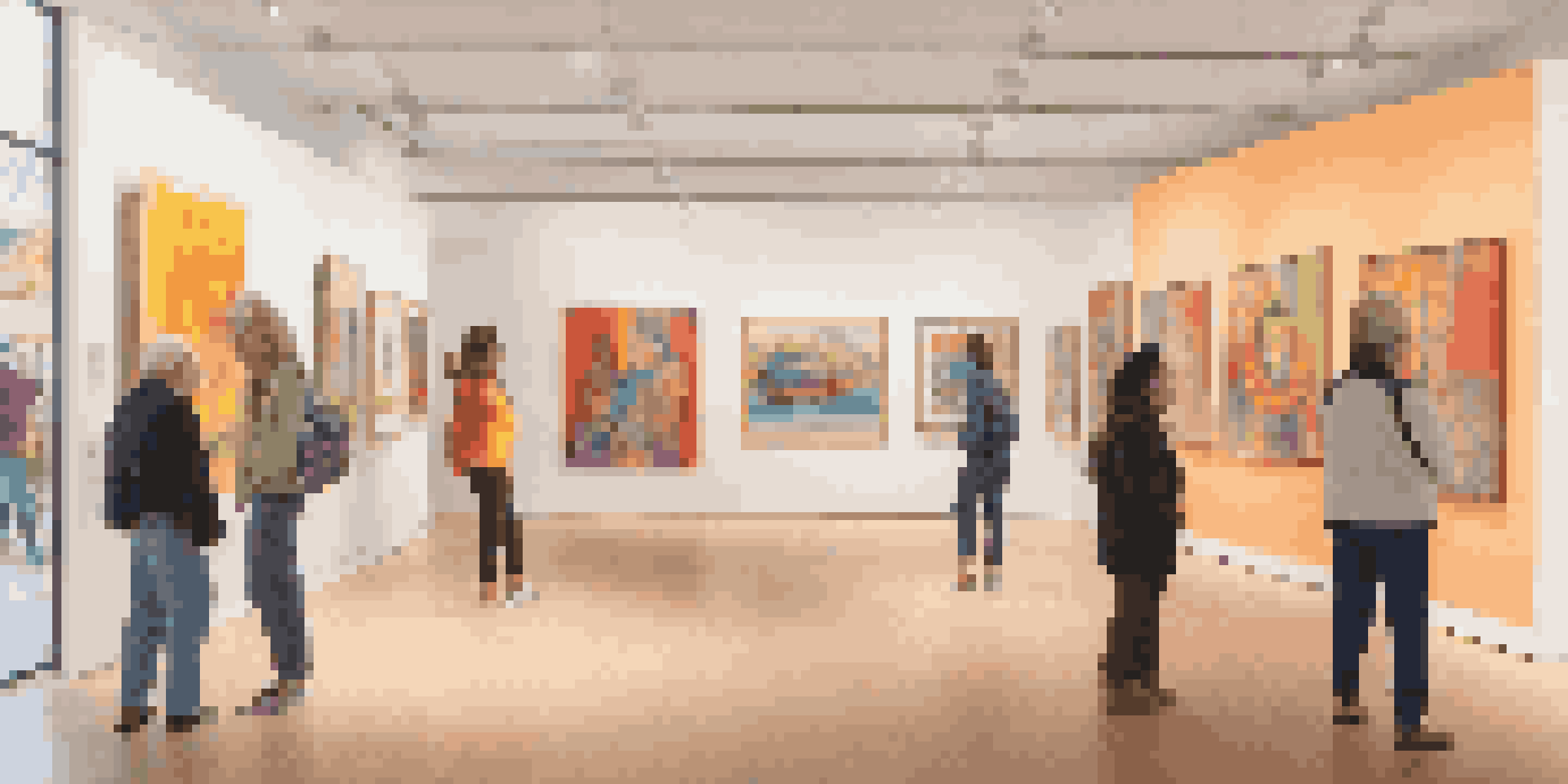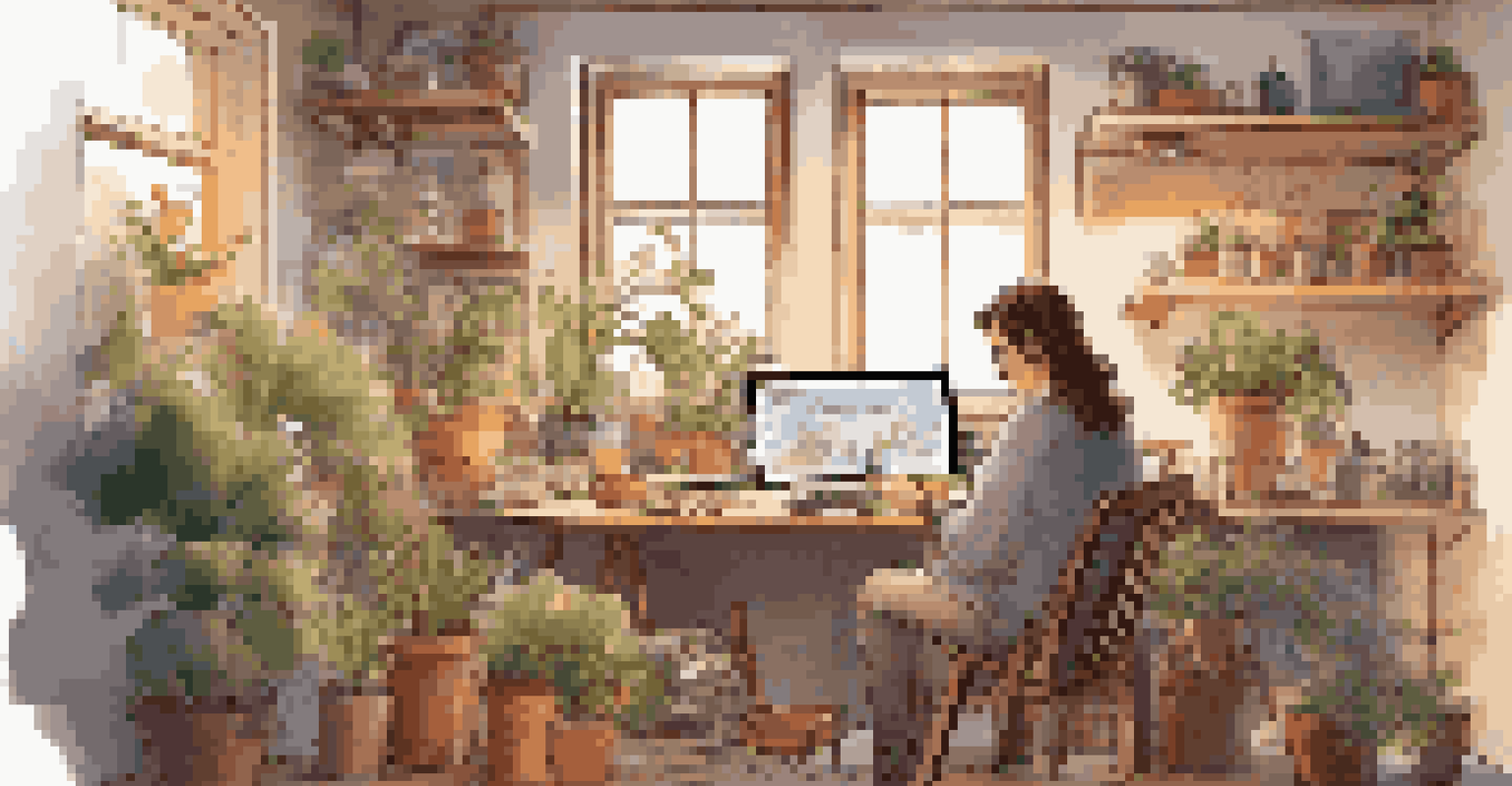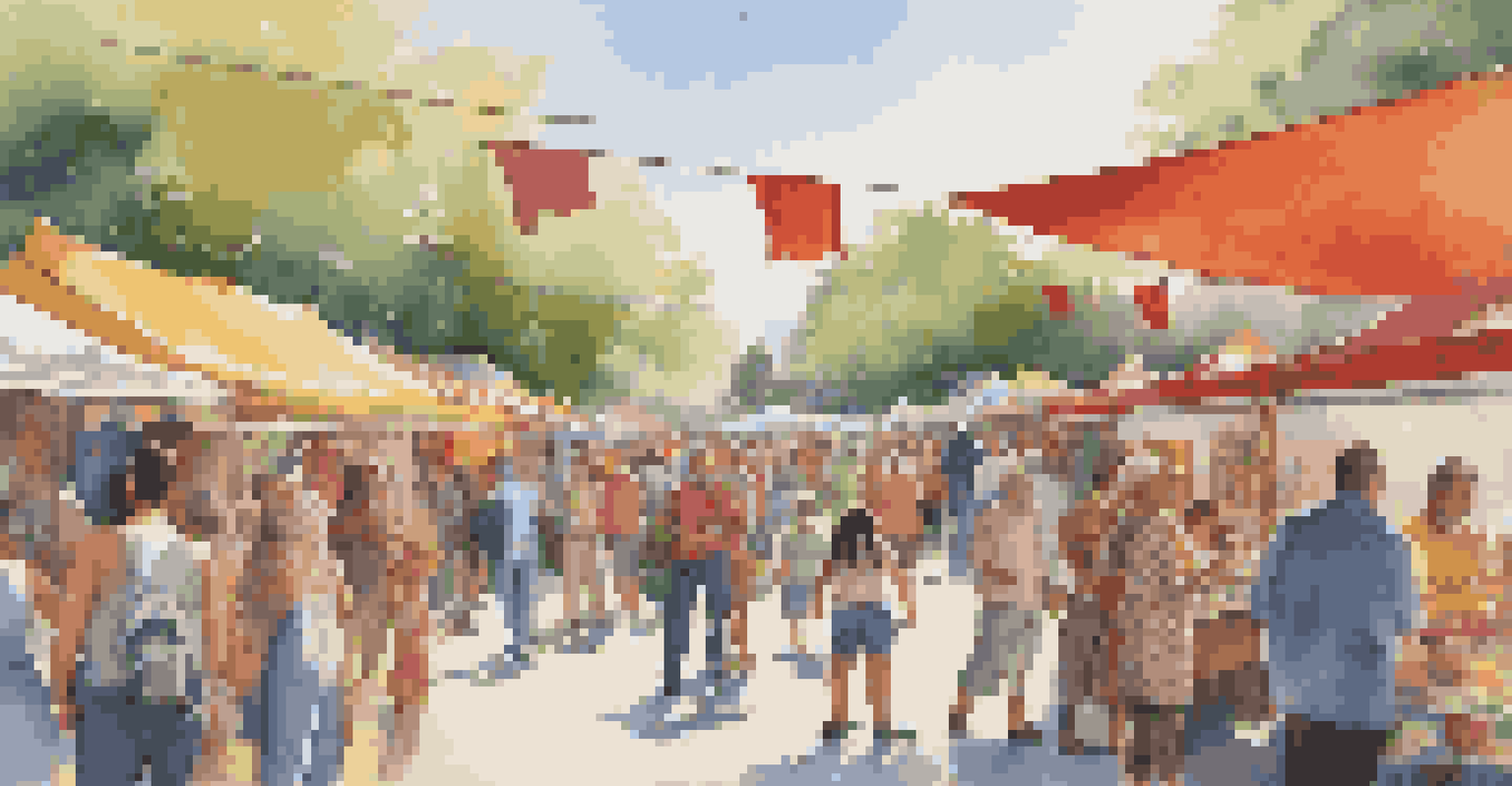Globalization, Art Funding, and the Changing Landscape of Support

Understanding Globalization's Impact on Art Funding
Globalization is a double-edged sword for artists and art funding. On one hand, it opens up new markets and audiences, allowing artists to reach people worldwide. On the other hand, it can lead to homogenization, where unique cultural expressions might get lost in the crowd. By understanding this delicate balance, we can appreciate how globalization reshapes the art landscape.
Art is the most beautiful of all lies; it is the most beautiful way of telling the truth.
The interconnectedness brought by globalization enables art institutions to collaborate across borders. For example, a gallery in New York can now easily partner with an artist from Tokyo, leading to innovative exhibitions that blend diverse perspectives. This synergy not only enriches the art itself but also creates new funding avenues as institutions seek to attract global audiences.
However, this shift also raises questions about the authenticity of art. When funding sources come from global corporations, artists may feel pressured to cater to broader tastes, potentially sacrificing their unique voice. Therefore, it's crucial to navigate these waters carefully to maintain artistic integrity while embracing global opportunities.
The Role of Government and Private Funding in Art
Governments play a pivotal role in providing financial support for the arts, often through grants and public funding. These funds can help artists create and showcase their work, particularly in times of economic uncertainty. However, as globalization continues to influence funding sources, many governments are reevaluating their strategies to adapt to changing dynamics.

Private funding, such as sponsorships and partnerships with corporations, has also become a significant player in the art world. While these sources can provide substantial financial backing, they often come with strings attached, influencing artistic freedom. This creates a complex relationship where artists must balance their creative vision with the expectations of their sponsors.
Globalization's Dual Impact on Art
While globalization opens new markets for artists, it also risks diluting unique cultural expressions.
As the landscape of funding evolves, artists and institutions must advocate for diverse funding models that prioritize artistic integrity. This includes exploring crowd-funding platforms and community-based initiatives that empower local artists. By diversifying funding sources, the art community can foster a more sustainable and inclusive environment.
Shifting Trends in Art Patronage and Support Systems
Art patronage has traditionally been associated with wealthy individuals or institutions, but this is changing. Today, a broader range of supporters, including grassroots communities and online audiences, are stepping up to fund art initiatives. This democratization of funding allows for a more diverse array of voices and projects to emerge.
The role of the artist is to ask questions, not to answer them.
For instance, crowdfunding platforms like Kickstarter have revolutionized how artists seek financial support. Artists can now directly engage with their audience and secure funding for projects that resonate with them, bypassing traditional gatekeepers. This not only empowers artists but also fosters a sense of community around their work.
Moreover, as the art world becomes more globalized, it's essential to recognize the role of social media in connecting artists with potential patrons. Through online platforms, artists can showcase their work and build a following, creating new opportunities for funding and collaboration. This shift signifies a move toward a more inclusive and accessible art funding landscape.
The Importance of Cultural Exchange in Art Funding
Cultural exchange is a vital aspect of globalization that enriches the art world. When artists from different backgrounds collaborate, they create works that reflect diverse perspectives and experiences. This not only broadens the reach of their art but also attracts funding from various sources interested in promoting cultural dialogue.
Institutions that prioritize cultural exchange often find innovative ways to secure funding. For example, joint exhibitions featuring artists from multiple countries can draw attention and financial support from both local and international sponsors. This collaborative approach not only fosters creativity but also strengthens the global art community.
The Shift in Art Funding Sources
Artists increasingly rely on diverse funding models, including crowdfunding and private sponsorships, which can influence their creative freedom.
However, it's essential to ensure that cultural exchange is genuine and mutually beneficial. Artists from marginalized communities should not be tokenized or exploited for their cultural heritage. By prioritizing respectful collaboration and equitable funding, the art world can thrive in this era of globalization.
Digital Platforms Transforming Art Funding Opportunities
The rise of digital platforms has profoundly transformed how artists seek funding and engage with audiences. Online galleries, virtual exhibitions, and social media have become essential tools for artists to showcase their work and connect with potential patrons. This shift has opened up new avenues for funding that were previously inaccessible to many artists.
For instance, platforms like Patreon allow artists to receive ongoing support from fans, creating a sustainable income stream. This model empowers artists to focus on their creative process without the constant pressure of traditional funding cycles. Additionally, it fosters a deeper relationship between artists and their supporters, as patrons feel more invested in the artistic journey.
As technology continues to evolve, artists must adapt to these changes to thrive in the competitive art landscape. Embracing digital tools not only enhances visibility but also enables artists to tap into global funding opportunities. By leveraging these resources, artists can navigate the complexities of globalization more effectively.
The Challenges Faced by Artists in a Globalized World
While globalization presents exciting opportunities, it also poses significant challenges for artists. One major hurdle is the increasing competition in a crowded market, where countless artists vie for attention and funding. Standing out in this global arena requires not only talent but also strategic marketing and networking skills.
Furthermore, artists often face barriers related to access and equity in funding. Those from underrepresented backgrounds may struggle to secure the same level of support as their more privileged counterparts. This disparity highlights the need for systemic changes in how funding is allocated and the importance of creating inclusive opportunities for all artists.
Future of Art Funding and Inclusivity
The future of art funding will focus on inclusive and sustainable models that prioritize equity and cultural exchange.
Lastly, the pressure to conform to global trends can stifle creativity and originality. Artists may feel compelled to create work that appeals to broader audiences, sacrificing their unique voice in the process. To combat this, it's crucial for the art community to champion diversity and authenticity, ensuring that all artists have the freedom to express themselves.
Envisioning the Future of Art Funding in a Global Context
As we look to the future, it’s clear that art funding will continue to evolve alongside globalization. Emerging technologies, changing audience demographics, and shifting cultural values will shape new funding models that prioritize inclusivity and sustainability. This presents an exciting opportunity for artists and institutions to rethink how they approach funding.
One potential avenue is increased collaboration between public and private sectors, creating hybrid funding models that leverage the strengths of both. This could lead to more robust support systems for artists, enabling them to navigate the challenges of a globalized world. Furthermore, engaging with communities and stakeholders can foster a sense of ownership and investment in local arts.

Ultimately, the future of art funding depends on our collective commitment to fostering a diverse and vibrant art landscape. By prioritizing equity, accessibility, and cultural exchange, we can ensure that the arts continue to thrive in a globalized world, enriching lives and communities along the way.